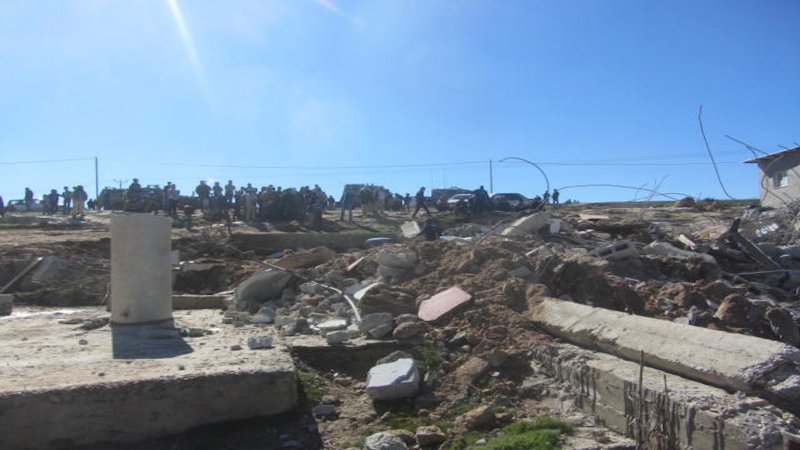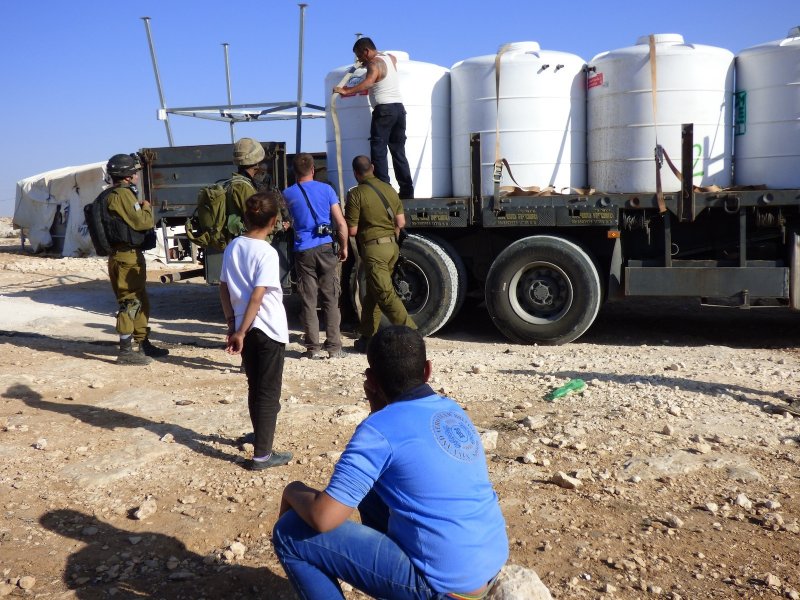Tag: South Hebron Hills
-
Israeli forces detain a child and destroy four structures in the South Hebron Hills
21st January 2015 | Operation Dove | South Hebron Hills, Occupied Palestine On January 20th, Israeli forces detained a Palestinian child near the village of Maghayir Al Abeed and demolished four structures in the Palestinian village of Ar-Rifa’iyya in the South Hebron Hills area. At about 9.00 a.m. Israeli bulldozers started to tear down two houses and two…
-
Israeli forces seize a tractor, its truck, four water tanks, and three bases from Susiya village
22nd November 2014 | Operation Dove | Susiya, Occupied Palestine On November 20th, the Israeli forces seized a tractor, its truck, four water tanks and three tanks’ bases from the Palestinian village of Susiya. In the early morning DCO [District Coordination Office] officers approached the Palestinian village to take pictures of the ongoing works to install…
-
Israeli military demolishes a Bedouin village in the South Hebron Hills
28th October | Operation Dove | Um Al Kheir, Occupied Palestine Yesterday, Israeli forces demolished a total of seven structures in the Bedouin village of Um al Kheir. The structures demolished are, three houses made of concrete, a caravan donated by the United Nations (United Nations Human Rights Response Fund with the support of Ireland, Norway, Spain, Sweden,…



